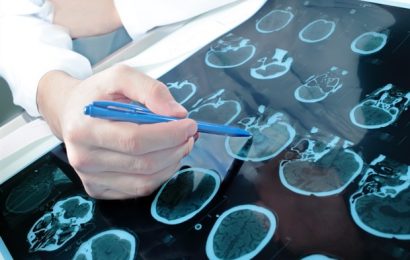Editor’s note: Find the latest COVID-19 news and guidance in Medscape’s Coronavirus Resource Center.
Anthony Fauci, MD, the chief medical adviser to President Joe Biden, said Tuesday that he went through a “Paxlovid rebound” that can occur after taking the antiviral to recover from COVID-19.
The symptoms that he had after he completed the treatment were more severe than those he had at first from the coronavirus, he said.
“After I finished the 5 days of Paxlovid, I reverted to negative on an antigen test for 3 days in a row,” Fauci said during Foreign Policy‘s Global Health Forum event.
“And then on the fourth day, just to be absolutely certain, I tested myself again,” he said. “I reverted back to positive.”
Fauci then began a second course of Paxlovid when symptoms returned, which were “much worse than the first go-around,” he said. During Tuesday’s event, he said he was feeling “reasonably good.”
He later said that Paxlovid kept him out of the hospital and stopped his infection from becoming more severe when he first tested positive on June 15.
“Paxlovid did what it was supposed to do,” he told The New York Times .
Fauci, 81, was prescribed Paxlovid due to his age, which puts him at greater risk for severe COVID-19 outcomes, according to Bloomberg News. He has been fully vaccinated and received two boosters.
The Global Health Forum, which Fauci attended virtually, featured public health experts from across the world to talk about COVID-19, vaccines, post-pandemic priorities to strengthen health systems, the health care workforce, the HIV and AIDS pandemic, cancer care, antibiotic and antimicrobial resistance, equitable health care, and preparation for the next health emergency.
Fauci, director of the National Institute of Allery and Infectious Diseases, spoke in a session about stronger global health security. During the segment, he shared his own experience with contracting COVID-19. He missed his daughter’s wedding in mid-June when he had the first infection but took part remotely, the Times reported.
Fauci first tested positive after having a “scratchy throat,” he told the newspaper. After taking Paxlovid, he was “surprised and disappointed” to see he tested positive again, and he had symptoms such as a low fever, achiness, runny nose, and “mild cough.” He then called his doctor, who prescribed another 5-day course of Paxlovid, which Fauci said is relatively common among those who have a rebound.
He said he would like to see a study that compares a 5-day course of Paxlovid to a 10-day course “to see if you can prevent the rebound by giving it for 5 extra days.” He completed his second course on Wednesday and said his symptoms were “essentially gone, except for a little bit of a stuffy nose.”
“I think there is understandable confusion when people hear about people rebounding,” he told the newspaper. “Don’t confuse that with the original purpose of what Paxlovid is meant for. It’s not meant to prevent you from rebounding. It’s meant to prevent you from being hospitalized.”
In recent months, public health experts have paid attention to potential rebound symptoms in patients who take Paxlovid, an antiviral pill approved for treatment of COVID-19 in high-risk patients. More evidence is showing that patients may improve after taking Paxlovid, test negative, and then have symptoms again a few days later, the newspaper reported.
Earlier this month, Pfizer, the maker of Paxlovid, announced that it would stop adding new people to a clinical trial of the drug among COVID-19 patients who have a low risk of hospitalization and death. The study failed to show that the drug reduced symptoms, hospitalizations, or deaths in a statistically significant way, Bloomberg reported.
On Thursday, Pfizer announced the submission of a new drug application to the FDA for approval of Paxlovid for patients who are at high risk for severe COVID-19, hospitalization, or death. The submission provides longer-term follow-up data, which found that Paxlovid treatment reduced the risk of hospitalization or death by 88% in non-hospitalized, high-risk adults treated within 5 days of the start of symptoms.
In late May, the CDC issued a health advisory about “COVID-19 rebound” after Paxlovid treatment. The CDC described it as “a recurrence of COVID-19 symptoms or a new positive viral test after having tested negative.”
At the same time, the CDC wrote, “a brief return of symptoms may be part of the natural history of [coronavirus] infection in some persons, independent of treatment with Paxlovid and regardless of vaccination status.”
The CDC said there is no evidence for more treatment in rebound cases, though people should isolate again for at least 5 days so they won’t pass COVID-19 to others.
People who have a rebound after taking Paxlovid can report their cases to Pfizer’s adverse event reporting page.
Sources
Foreign Policy: “FP Global Health Forum,” June 28, 2022.
The New York Times: “Fauci says he believes Paxlovid kept him out of the hospital, even though he tested positive again.”
Source: Read Full Article


